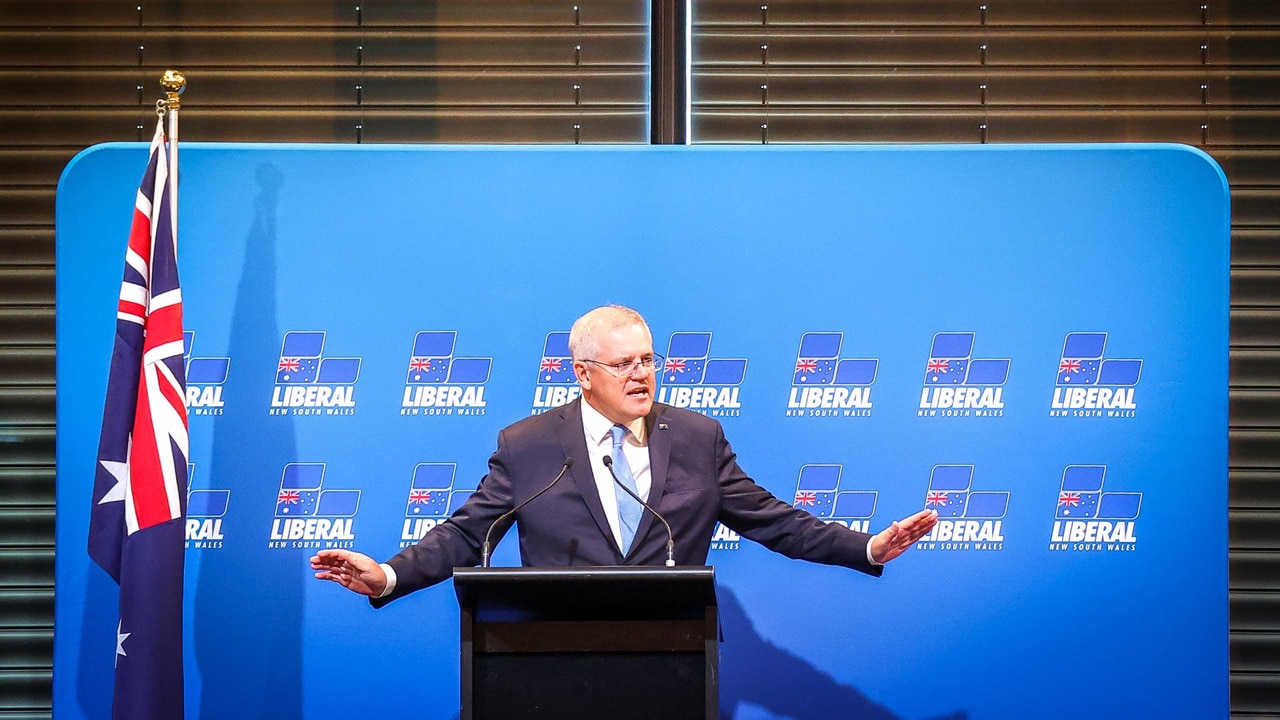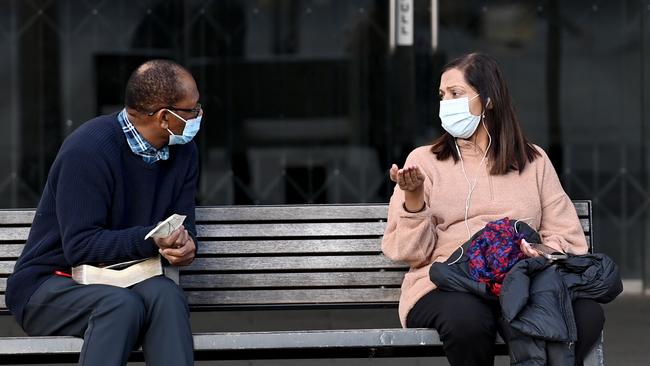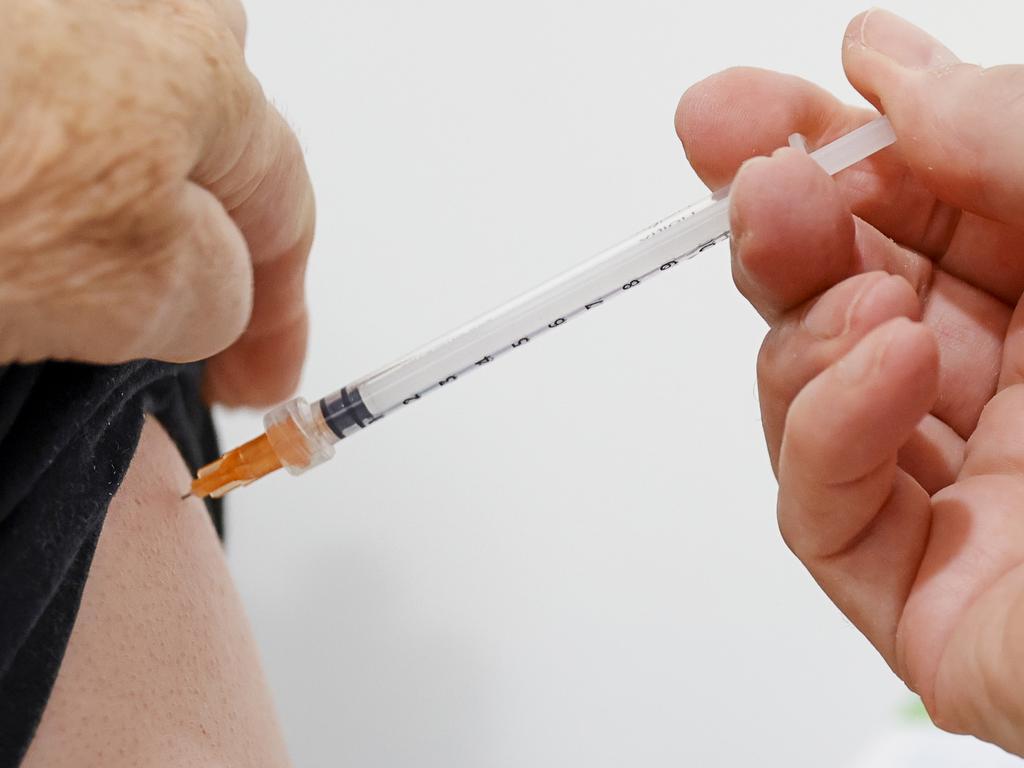Uncertain science blighted pandemic management
Scott Morrison finds himself in the eye of a storm. But handing over control of the Covid agenda to bureaucrats who copied Jacinda Ardern’s ‘truth’ doctrine was far worse.

Scott Morrison finds himself in the eye of a growing storm for five additional portfolios he assumed, mostly without the knowledge of the cabinet and minister concerned. Most of these powers were never triggered and only one was possibly abused to overrule the resources minister to cancel a politically unpopular offshore gas drilling project.
The justification for all this was the realisation that the declaration of a biosecurity emergency transforms the health minister into a de facto dictator. The other four portfolios will further cement the former prime minister’s reputation for secretiveness and deception (of cabinet colleagues and the nation).
In the health portfolio, however, the problem lies with the law that grants such sweeping power to one person.
Morrison was acting prudently to put in place guardrails against abuse. The secrecy betrayed his penchant for controlling behaviour. Instead, he should have openly explained the dangers and committed to amending the law.

The biggest mistake was to hand over control of the Covid agenda, in the false belief of following the science, to chief health officers who tend to be bureaucrats more than leading scientists engaged in cutting edge medical research. In the blink of an eye, they morphed from obscure officials to all-powerful chief executives.
Australian authorities in effect copied New Zealand Prime Minister Jacinda Ardern’s doctrine of the health ministry as the “single source of truth” on coronavirus. The unavoidable consequence of this was attempts, with legacy and social media help, to marginalise and silence all dissenting voices. The more the latter’s warnings come true, the greater is the loss of trust in experts, institutions and ministers.
On August 13 the Australian Medical Professionals’ Society published a wide-ranging letter addressed to all Australian colleges and associations of health, medicine and science. Along with the attached report by Dr Phillip Altman, the letter is an extraordinary yet authoritative catalogue of mistakes made in Australia’s pandemic management and the many harms resulting from it, the uncertain science behind it, the limitations of vaccines and the efforts of regulators to come between doctors and patients.

The Covid report from NSW Health for the week of July 10-16 says: “The minority of the overall population who have not been vaccinated are significantly over-represented among patients in hospitals and ICUs with Covid-19.” Just two pages later the same report gives the number of unvaccinated people admitted to hospital and intensive care units as zero. The sentence is repeated verbatim in the latest weekly report for July 31-August 6, with the number of unvaccinated people admitted to hospital at zero and to ICU just one.
Even by the standards of public health authorities across the world gaslighting the people to nudge them into docile – and often performative – compliance with official edicts, this level of internal contradiction of narrative with data is breathtaking.
Not a single Covid death under 40 was reported in the week to August 6. The total number of boosted people who died with Covid was 71.3 per cent of the 1281 Covid deaths whose vaccination status was known, slightly above the “more than 68 per cent” of eligible people who have been boosted.
Thus the effectiveness of boosters in preventing death lasts only a short time.
People who have received two to four doses made up over 95 per cent of the over-16s and 98.1, 95.8, and 82.6 per cent of Covid hospital admissions, ICU admissions and deaths, respectively.

In the 11 weeks from May 22 to August 6, the unvaccinated comprised 0.2, 1.8 and 13.1 per cent of all NSW Covid-related hospital admissions, ICU admissions and deaths, respectively. The double vaccinated and boosted made up 98.1, 95.4 and 85 per cent of the same respective totals. Just the boosted added up to 73.3, 73.4 and 69.9 per cent.
We are no longer in the realm of a pandemic of the unvaccinated.
Despite major protective benefits, Covid vaccines are undeniably leaky. Their real-world effectiveness lasts a disappointingly short time.
One explanation could be that with mass infections and the resulting naturally acquired immunity, the vaccinated have lost their “competitive advantage”. Mass vaccination campaigns in the middle of a pandemic can possibly give an evolutionary advantage to mutations with greater vaccine escape properties.

Australia’s relative success in 2020-21 was helped by fortuitous circumstances. Being an isolated island country, geographically distant from major international traffic hubs and population centres, made border controls easier to police and enforce. The international and domestic restrictions on travel, movement and activities kept Covid-related deaths to around 1000 until September last year: an impressive accomplishment by global standards.
Then they exploded. In 2020-21, the government’s response to the harsh international spotlight on the curtailment of many freedoms was to point to results. By now the performance-based international comparison has lost lustre. On August 14, Australia’s rate of 378,475 cumulative Covid cases per million people had surpassed the US (275,750), Britain (349,425) and EU (361,870) rates.
To be fair, though, the death toll is still only about one-fifth to one-sixth of the European, British and American figures, and we are in winter, when the virus is at its most virulent. Both case and mortality figures track the rise in the boosted from 1.51 million to 14.16 million period from mid-December to mid-August.
The best pathway to herd immunity was through the combination of natural immunity from prior infection and vaccines. Countries that avoided mass infection through strict isolation measures built up an immunity debt that left their populations more vulnerable to globally circulating pathogens once they reopened. When the highly infectious if less lethal Omicron variant struck, vaccines developed to combat the original Wuhan strain proved inadequate to controlling the spread.

Meanwhile Denmark’s government would appear to have been captured by anti-vaxxers. Earlier this month it banned vaccines for anyone under 18 unless prescribed by a doctor based on an individual assessment of high risk. Similarly, people under 50 will no longer get a booster unless recommended by a doctor.
Bowing to the growing body of studies and the weight of accumulating data, on August 11 the globally influential US Centres for Disease Control and Prevention issued new guidance.
It marks a quiet yet major retreat from previous Covid management, based on the triple acknowledgment of “transient” protection from vaccination and boosters against infection and transmission, breakthrough infections among vaccinated, and naturally acquired immunity through infection. It also quietly dropped the false claim that the mRNA and spike protein “do not last long in the body”.
The guidelines have moved sharply away from social distancing, quarantining, track-and-tracing, asymptomatic testing and even vaccine requirements, abolishing the distinction by vaccination status for most settings.
Their net threefold effect is to transfer much of the responsibility for risk reduction from institutions to individuals, to prioritise preventing severe illness over slowing transmission, and to switch from sweeping population-wide precautions to targeted advice for vulnerable populations.
If this looks similar to the much-reviled Great Barrington Declaration of October 2020 that merely restated the pre-Covid-19 medical-scientific consensus, that’s because it is.
Ramesh Thakur is emeritus professor at the Australian National University’s Crawford School of Public Policy and a former UN assistant secretary-general.






To join the conversation, please log in. Don't have an account? Register
Join the conversation, you are commenting as Logout